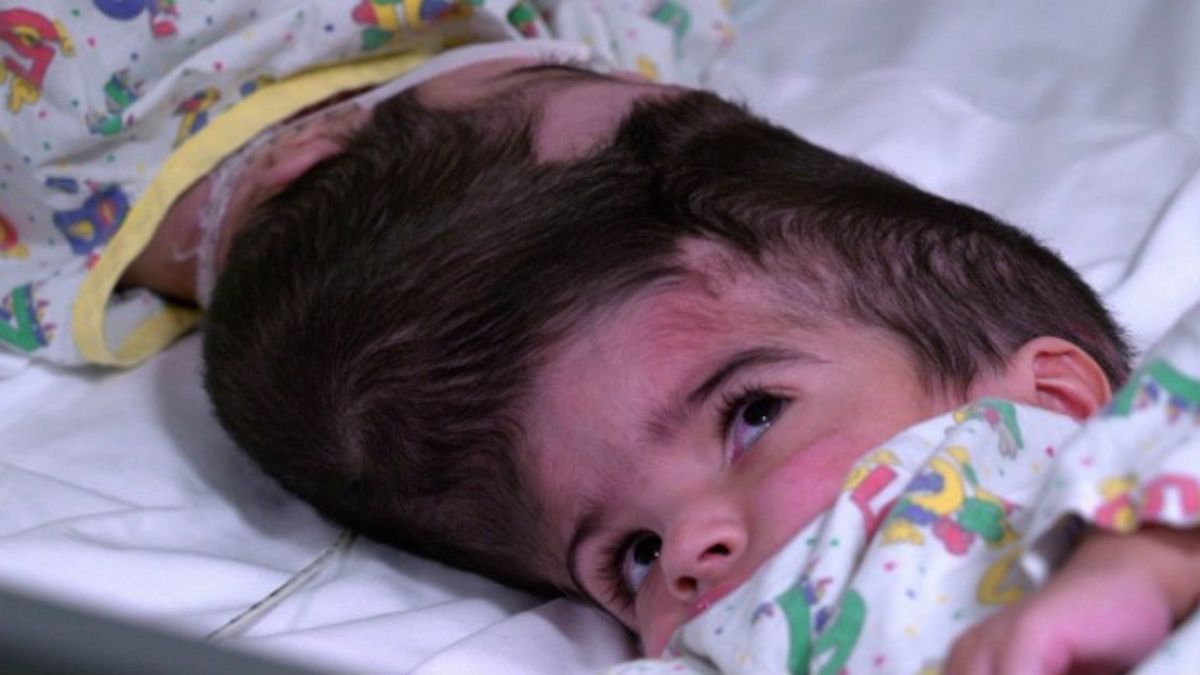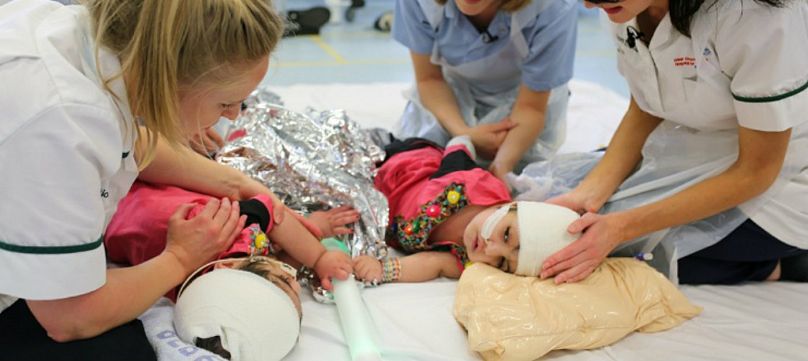Safa and Marwa were born as craniopagus twins — joined at the head. They were separated in London after four operations and 55 hours of operating time.
Rare conjoined twins fused at the head have been successfully separated in London, says Great Ormond Street Hospital.
Safa and Marwa were born by caesarian section in early January 2017 in Peshawar, in northwestern Pakistan.
The maternity team had picked up on the ultrasound the twins would be joined but had no idea that they would be craniopagus twins — the rarest form of all where the two are fused together via the cranium.
One in every 2.5 million births produces conjoined twins and only 5% of them are fused at the head, according to Britain's National Health Service. But 40% are stillborn or die during labour while 78% of those who survive birth die before the age of one with the chance of surviving early infancy estimated a one in every 10 million occurrences.
Difficult operations
Scans of the girls revealed they had two distinct brains but that they are misshapen and they share some veins and arteries.
Doctors at the Great Ormond Street Hospital convert the scans into 3D images, make models of them with a 3D printer and use virtual reality to practice on them.
Months of planning — involving craniofacial, neurology and psychology experts, nurses, radiologists and physiotherapists — was done before the first operation on the girls in October 2018, when they were aged 19 months old. It focused on sealing off the twin's arterial connections.
A month later, they once again went into the operating room in order for doctors to divide shared vessels. The operation was a difficult one. Clots formed in Safa's neck veins, shunting blood to Marwa. Realising Marwa was the weaker twin, doctors decide to give her a key vein which led Safa to have a stroke several hours after the operation.
The final major operation was conducted in February when the girls, who had been implanted with tissue expanders several weeks earlier, are finally separated. Surgeons then reconstructed the top of their heads with pieces of their former shared skull and covered them up with the expanded skin.
'Period of rehabilitation'
Overall, separating the two twins will have required four operations, 55 hours of operating time and a team of 100 medical staff, all funded by a private donor.
The two girls were released from the hospital earlier this month but remain in London with their mother Zainab and their grandfather Mohammad Sadat Hussain. Their father died of a heart attack two months before their birth.
"What they need is a period of rehabilitation," neurosurgeon Noor Ul Owase Jeelani, who led the operations, said.
"They're now two years of age but these babies have never crawled, they've never sat up so they almost need to be taught how to do all of those things starting at age two rather than starting at age two months.
"I would be very optimistic that by their third birthday they should be walking. That's what I would hope to see," he added.

